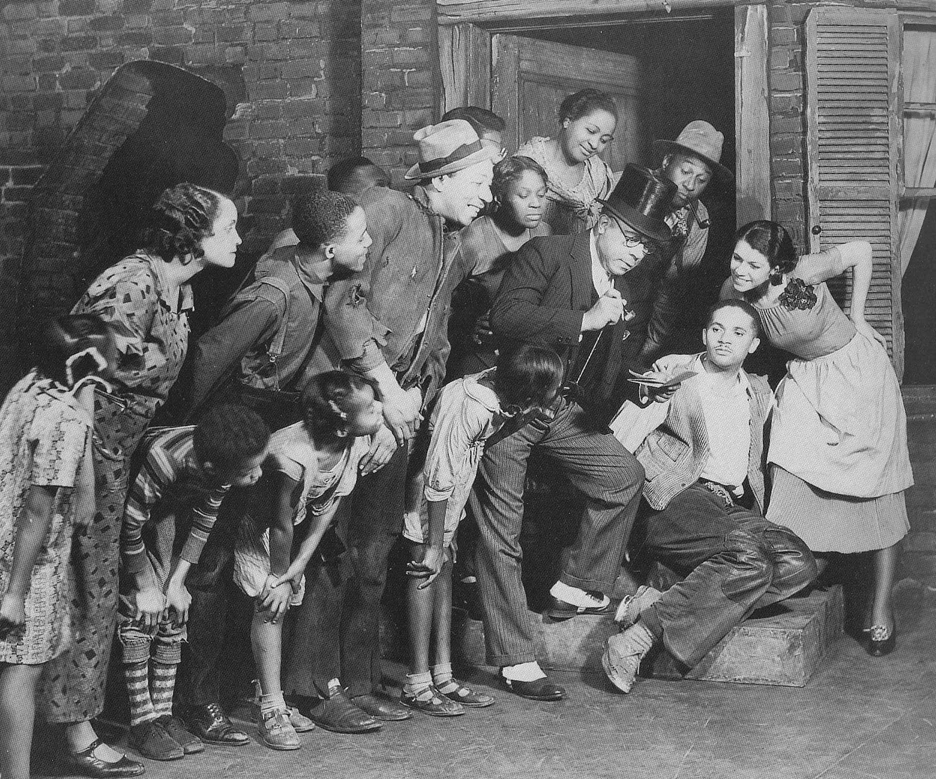Plenty O' Somethin'
"On My Way" by Joseph Horowitz is a book we may not need but I'm glad we have. It's 250 pages mostly about how we got Porgy And Bess on Broadway in 1935. The show is considered one of the high points of the American musical, and American opera, but I don't think millions were demanding to find out what was behind the original production.
First, of course, was DuBose Heyward's 1920s novella Porgy. Heyward came from a genteel southern tradition, but was fascinated by the black, Gullah-speaking community of South Carolina. His book was popular and George Gershwin wrote Heyward, suggesting it might be musicalized. Heyward didn't take him up on it, as he and his cosmopolitan wife Dorothy were already adapting the work as a straight play. Only some time after that became a hit in the 1927 Theatre Guild production did Gershwin return to the work.
But the hero of "On My Way" isn't Heyward, or even Gershwin, but director Rouben Mamoulian. Mamoulian, an Armenian born in Tbilisi, Georgia, studied Russian theatre and by his early 20s was doing imaginative work on the American stage. The Theatre Guild at first wasn't sure what to do with the Porgy script, but Mamoulian, newly hired, decided it would be right for his first assignment there.
Mamoulian believed the playwright provided the dialogue, but the director did everything else. His productions concentrated on the sound and look of the work, not just the words. And everything--the sets, the costumes, the movement--were created for a unified whole. His kind of directing required a metronome and a baton. At its best this method created a powerful, even startling theatrical event--though it sometimes failed to lead to powerful individual performances.
To get a feeling for the show, Mamoulian studied Gullah culture, and also attended Harlem churches. In addition, he and the Guild had to find a large African-American cast at a time when few such actors were seen on the Broadway stage.
Mamoulian had a lot of say in reshaping the script, and his set pieces--the picnic, the funeral, the hurricane, etc.--made the play a surprise hit. And though it was a straight play, it was filled with music, such as spirituals and other suitable songs.
When sound came to Hollywood, it was natural that Mamoulian would be asked to make films. And he created some memorable titles. He's too often relegated by critics as a trickster with little personality, but stuff like Applause (1929), Dr. Jekyll And Mr. Hyde (1931), Love Me Tonight (1932) and Queen Christina (1933) is nothing to sneeze at.
While Mamoulian was out West, George Gershwin was busy musicalizing Porgy, renamed Porgy And Bess. The lyrics were supplied by brother Ira and DuBose Heyward himself. Originally, they wanted John Houseman to direct, but the Guild felt Mamoulian had the experience and talent to run such a huge, expensive production.
Once again, Mamoulian took over, shaping the show, which was based on the play, not the novel. Of course, he had the original plot to work with, which he knew intimately, and the amazing score. The show was recognized as something special, but did not make money, and reviewers often took a patronizing attitude toward Gershwin. Some were perplexed--what was this, opera or musical, serious or popular?
Eventually, the work got under the skin of the public--even though Mamoulian didn't like later productions--and now enjoys universal acclaim. This was a little too late for Gershwin, who died very young in 1937. Same for Heyward, who died in 1940. Mamoulian went on, though, and helped revolutionize the Broadway musical with two smashes, Oklahoma! (1943) and Carousel (1945). By the 1950s, however, his career petered out. In Hollywood, he became better known for the pictures he was fired from--including the Sam Goldwyn production of Porgy And Bess--than those he completed.
At least he lived long enough to see Porgy And Bess become a modern classic, even if his name was rarely mentioned as one of the people behind it. Perhaps Horowitz's book will do something to address that.



2 Comments:
Just saw the Broadway tour of Porgy & Bess in Detroit. Without the context, it is a strange, strange, show with a plot that is so utterly depressing you can't imagine what possessed people to make it.
Well, lots of incidents, if nothing else. And the ending is uplifting.
Post a Comment
<< Home